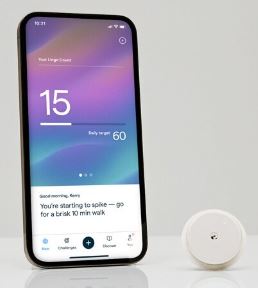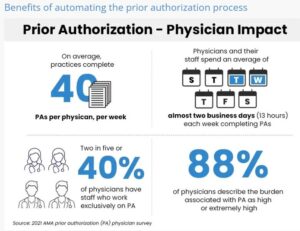Meet the newest insulin pump: all about “twiist” with Sequel CEO Alan Lotvin by Stacey Simms for Diabetes-Connections.com, 16 April 2024.
 This week, the newest pump coming to the market is called the twiist. It’s a very different shape – circular with a top half that twists off – with very different software – Tidepool Loop. The company behind this pump – they’re called Sequel – wants to be different as well, hoping to offer solutions to bigger issue than basal and bolus rates. It’s very ambitious and we have a wide-ranging conversation about it all with Sequel’s CEO Alan Lotvin.
This week, the newest pump coming to the market is called the twiist. It’s a very different shape – circular with a top half that twists off – with very different software – Tidepool Loop. The company behind this pump – they’re called Sequel – wants to be different as well, hoping to offer solutions to bigger issue than basal and bolus rates. It’s very ambitious and we have a wide-ranging conversation about it all with Sequel’s CEO Alan Lotvin.
FDA issues import alerts against 2 more plastic syringe manufacturers by Nick Paul Taylor for MedTechDive.com, 17 May 2024.
 The latest import alerts are part of an investigation the FDA began in November 2023. The agency started testing devices made in China and advised healthcare providers to consider switching to products manufactured in other countries after receiving reports about quality problems that could cause plastic syringes to leak and break. In March 2024, the FDA strengthened its recommendations, asking U.S. suppliers, consumers and healthcare organizations to immediately transition away from certain devices. The agency also issued three warning letters and an import alert that month. A second import alert and fourth warning letter followed in April.
The latest import alerts are part of an investigation the FDA began in November 2023. The agency started testing devices made in China and advised healthcare providers to consider switching to products manufactured in other countries after receiving reports about quality problems that could cause plastic syringes to leak and break. In March 2024, the FDA strengthened its recommendations, asking U.S. suppliers, consumers and healthcare organizations to immediately transition away from certain devices. The agency also issued three warning letters and an import alert that month. A second import alert and fourth warning letter followed in April.
After the latest action, four Chinese manufacturers of plastic syringes are subject to import alerts. The FDA uses the alerts, which allow products to be detained without physical examination, to stop imports of devices from companies with manufacturing problems. The agency issued the latest alerts because the two companies were “not meeting device quality system requirements.” The FDA is continuing to evaluate problems with syringes made in China. The agency also sent warning letters to Jiangsu Shenli Medical Production, Medline Industries, Sol-Millennium Medical and Cardinal Health. Sol-Millennium is recalling affected products.
Against that backdrop, President Joe Biden announced the U.S. will increase the tariff rate on Chinese syringes and needles from zero to 50%.
Read more: FDA issues import alerts against 2 more plastic syringe manufacturers
Playing sports may lower insulin resistance, reduce odds for MASLD in type 1 diabetes by Michael Monostra for Healio.com/endocrinology, 13 May 2024.
 Adults with type 1 diabetes who play sports have less insulin resistance and are less likely to develop metabolic dysfunction-associated steatotic liver disease, according to study findings.
Adults with type 1 diabetes who play sports have less insulin resistance and are less likely to develop metabolic dysfunction-associated steatotic liver disease, according to study findings.
“Participants performing regular exercise training — a possible proxy for healthy lifestyle — had a lower degree of insulin resistance and lower odds for [metabolic dysfunction-associated steatotic liver disease] compared to those not participating in sports,” Marieke de Vries, MD, researcher in the department of internal medicine at University Medical Center Utrecht in the Netherlands, and colleagues wrote in a study published in Diabetic Medicine. “This underlines the relevance of lifestyle management in type 1 diabetes clinical care.”
Playing sports may lower insulin resistance, reduce odds for MASLD in type 1 diabetes
Are insulin sensitizers the new strategy to treat Type 1 diabetes? A long-acting dual amylin and calcitonin receptor agonist improves insulin-mediated glycaemic control and controls body weight by Simone Anna Melander, et al, published by British Pharmacological Society Journals, 20 February 2024.
 Insulin therapies for Type 1 diabetes (T1D) have limitations, such as glucose fluctuations, hypoglycemia, and weight gain. Only pramlintide is approved with insulin. However, its short half-life limits efficacy, requiring multiple daily injections and increasing hypoglycemia risk. New strategies are needed to improve glycemic control. Dual amylin and calcitonin receptor agonists are potent insulin sensitizers developed for Type 2 diabetes (T2D) as they improve glucose control, reduce body weight, and attenuate hyperglucagonemia. However, it is uncertain if they could be used to treat T1D.
Insulin therapies for Type 1 diabetes (T1D) have limitations, such as glucose fluctuations, hypoglycemia, and weight gain. Only pramlintide is approved with insulin. However, its short half-life limits efficacy, requiring multiple daily injections and increasing hypoglycemia risk. New strategies are needed to improve glycemic control. Dual amylin and calcitonin receptor agonists are potent insulin sensitizers developed for Type 2 diabetes (T2D) as they improve glucose control, reduce body weight, and attenuate hyperglucagonemia. However, it is uncertain if they could be used to treat T1D.
The insulin sensitizer KBP-336 lowered glucagon secretion while attenuating insulin-induced weight gain. Additionally, KBP-336 may prevent hypoglycemia and improve insulin resistance, which could be a significant advantage for individuals with T1D seeking therapeutic benefits.
Read more: Are insulin sensitizers the new strategy to treat Type 1 diabetes?
Dr. Rayhan Lal of Stanford Health Presentation on Automated Insulin Delivery Systems, hosted by JDRF Northern California, 15 May 2024.
 Dr. Rayhan Lal is a renowned pediatric/adult endocrinologist at Stanford Health in northern California. He has lived with type one for over 30 years, as a self-professed nerd. He studied electrical engineering and computer science at the University of California – Berkeley. When both his younger siblings also developed T1D, he decided to shift gears and move his career focus from engineering to medicine, specifically endocrinology.
Dr. Rayhan Lal is a renowned pediatric/adult endocrinologist at Stanford Health in northern California. He has lived with type one for over 30 years, as a self-professed nerd. He studied electrical engineering and computer science at the University of California – Berkeley. When both his younger siblings also developed T1D, he decided to shift gears and move his career focus from engineering to medicine, specifically endocrinology.The American Diabetes Association and The Leapfrog Group Name 17 Hospitals as “Recognized Leaders in Caring for People Living with Diabetes” released by Diabetes.org, 20 March 2024 for the American Diabetes Association.
The American Diabetes Association (ADA) and The Leapfrog Group announced the first hospitals to receive national designation as Recognized Leaders in Caring for People Living with Diabetes. The designation reflects a strong commitment to the safety and well-being of hospitalized people living with diabetes. An estimated 30% of hospitalized people are living with diabetes, and more than 200,000 hospitalized people die every year from preventable safety problems.
“These hospitals are leading the nation in dedication to people with diabetes. Safe, effective, patient-centered care from hospital admission through a patient’s return home lowers risks of serious health complications and improves outcomes for people living with diabetes,” said Robert Gabbay, MD, PhD, the ADA’s chief scientific and medical officer.
“Whatever their reason for admission, hospitalized patients who are living with diabetes are at heightened risk from the preventable errors and accidents that are a problem for all patients in American hospitals,” said Leah Binder, MA, MGA, president & CEO of The Leapfrog Group, an independent national watchdog for patient safety. “We extend our heartfelt congratulations to our first 17 recognized hospitals who are pioneering what we hope is a tidal wave of change in hospitals’ approach to patient safety for people living with diabetes.”
One in four people admitted to a hospital suffer some form of unintended harm, according to a report by the Office of the Inspector General. Hospitalized people living with diabetes face heightened safety risks including amputation and other complications such as coma and death if mistakes are made in their daily care.
Dexcom details plans for over-the-counter CGM as insulin pump firms seek Type 2 coverage by Elise Reuter for MedTechDive.com, 16 May 2024.
Diabetes tech companies outlined their plans for upcoming products in first-quarter earnings calls and reaffirmed their focus on expanding coverage for more patients with Type 2 diabetes.
-
-
 Dexcom shared more details about Stelo, its new CGM intended for people with diabetes who don’t take insulin. Last year, Medicare began covering CGMs for all people with diabetes who take insulin or have a history of hypoglycemia, removing a coverage requirement that people must take multiple daily doses of insulin.
Dexcom shared more details about Stelo, its new CGM intended for people with diabetes who don’t take insulin. Last year, Medicare began covering CGMs for all people with diabetes who take insulin or have a history of hypoglycemia, removing a coverage requirement that people must take multiple daily doses of insulin.
-
Dexcom plans to sell Stelo on a website through individual purchases or a cash-pay subscription model. “We believe people will be interested who don’t have diabetes and will, in fact, use it and will purchase it,” Kevin Sayer, CEO said. “But the focus, out of the gate, is in this marketplace where people have a direct need.” Insurance coverage is another key component of access.
-
-
- Insulet is currently in a commercial pilot of its Omnipod Go tubeless pump, to replace daily injections of long-acting insulin for people with Type 2 diabetes. Insulet received FDA clearance for the device last year.
- Tandem is also working on a Type 2 indication for its Control-IQ technology, which is used to automate insulin dosing by connecting Tandem’s pumps with a CGM.
-
AHA, H-ISAC warn hospitals about Black Basta following Ascension cyberattack by Andrea fox for HealthcareITNews.com, 13 May 2024.
 The Health Information Sharing and Analysis Center issued a threat alert Friday about the Russia-backed ransomware group Black Basta, warning of its accelerated attempted attacks against the healthcare sector. Prompted by H-ISAC, the American Hospital Association also sent a cybersecurity advisory with technical mitigation recommendations to its members.
The Health Information Sharing and Analysis Center issued a threat alert Friday about the Russia-backed ransomware group Black Basta, warning of its accelerated attempted attacks against the healthcare sector. Prompted by H-ISAC, the American Hospital Association also sent a cybersecurity advisory with technical mitigation recommendations to its members.
The alerts come in the wake of a major cyberattack impacting St. Louis-based Ascension health system that started this past Wednesday and continues to hamstring clinical operations. Staff at Ascension’s hospitals reported flying blind with some clinical and IT services, including imaging, after widespread disruption that has the health system working to recover its systems.
At least two healthcare organizations “in Europe and in the United States” saw serious operational disruptions in the past month after being hit with Black Basta ransomware, according to H-ISAC in the new bulletin. The AHA has warned its member hospitals that it is urgent to heed H-ISAC’s recommendations on defending against the emerging threat.
“Recent actionable threat intelligence provided by our partners in the Health-ISAC and government agencies indicate that this known Russian-speaking group is actively targeting the U.S. and global healthcare sector with high-impact ransomware attacks designed to disrupt operations,” John Riggi, AHA’s national advisor for cybersecurity and risk, said. “It is recommended that this alert be reviewed with high urgency and the recommended technical mitigations be put in place. We anticipate additional threat intelligence in the near term, which will be further disseminated to the field.”
Read more: AHA, H-ISAC warn hospitals about Black Basta following Ascension cyberattack
Prior authorization is a multifaceted problem that must be tackled from numerous angles. High on the hit list are the sluggish response times, an overwhelming and increasing volume of requirements, inadequate peer-to-peer reviews and more. As the physician’s powerful ally in health care, the AMA is tackling prior authorization with research, practice tools and reform resources.
Not having a full understanding of which treatments or medications that an insurer requires prior authorization for, what documents are required to support a request for prior authorization, or the specific reason for a denial can lead to real patient harm. In some cases, this lack of transparency can even contribute to patient deaths. “When you get a denial of a request, we often don’t know why. You don’t get told the reasoning behind the denial and it can take hours and hours to appeal a decision. And then sometimes you wait weeks or even months for a peer-to-peer consult,” AMA President Jesse M. Ehrenfeld, MD, MPH.
Read more: Fixing prior auth: Clear up what’s required and when




I find it rather dismaying that of the 17 “approved T1D hospitals” within America, only a single one is located in California. Only 17 for the entire nation? Perhaps this study needs just a bit more expansion?
Alas….
I was surprised that Dr. Rayhan Lal did not mention the latest upgrade to iAPS named Trio which should be released soon. I know of several iAPS users that have been disappointed with its current state. The Trio version has been developed outside of the iAPS originators control. This should be interesting indeed.
Dr. Rayhan Lal on Automated Insulin Delivery Systems, presentation is missing the screen share. I would love to see the full presentation with the slides.
The 17 hospitals seems fairly light. I notice that it is a self nomination. I am guessing next year there will be several hundred new organizations. I hope anyway.
I think the twist pump seems interesting because of the Tidepool connection.
That business of the foreign manufacturers of syringes is freaky. I had a bunch of cheap syringes and they were lousy. I get BD most of the time. But this one the pharmacy was passing out samples of brand i had never heard of so I said. I drew the plunger back and the thing broke off. Had that been my own syringe, I woudl have been in serious trouble.